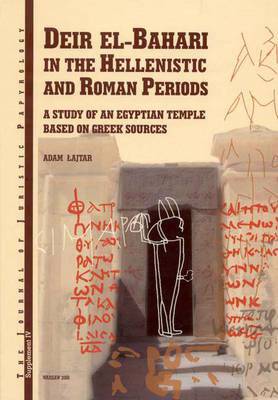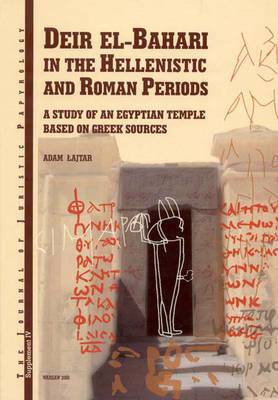
- Afhalen na 1 uur in een winkel met voorraad
- Gratis thuislevering in België vanaf € 30
- Ruim aanbod met 7 miljoen producten
- Afhalen na 1 uur in een winkel met voorraad
- Gratis thuislevering in België vanaf € 30
- Ruim aanbod met 7 miljoen producten
Zoeken
Deir El-Bahari in the Hellenistic and Roman Periods
A Study of an Egyptian Temple Based on Greek Sources
A Lajtar
€ 124,45
+ 248 punten
Omschrijving
The temple of Queen Hatshepsut at Deir el-Bahari at Luxor is one of the most fascinating architectural monuments of Ancient Egypt. It has been explored and reconstructed by Polish archaeologists for several decades and the present volume is the most recent result of these activities. The author tracks the history of the sanctuary in the Ptolemaic and Roman periods when it housed a lively cult of two Ancient Egyptian `saints', the deified sages Amenhotep son of Hapu and Imhotep. The book contains the complete edition of Greek sources connected to this cult, including 320 inscriptions left by pilgrims on the walls of the temple, as well as several ostraca and votive monuments. On the basis of this material, different aspects of the cult are discussed in a synthetic part of the book. These include: the topography of the cult and its history; gods worshipped in the temple; forms of the cult; the economic side of the cult; the visitors of the temple. The study closes with a chapter devoted to Deir el-Bahari in the Late Antique period when the place was frequented by a pagan corporation of ironworkers from Hermonthis.
Specificaties
Betrokkenen
- Auteur(s):
- Uitgeverij:
Inhoud
- Aantal bladzijden:
- 470
- Taal:
- Engels
- Reeks:
- Reeksnummer:
- nr. 4
Eigenschappen
- Productcode (EAN):
- 9788391825037
- Verschijningsdatum:
- 1/02/2006
- Uitvoering:
- Hardcover
- Formaat:
- Genaaid
- Afmetingen:
- 210 mm x 297 mm
- Gewicht:
- 352 g

Alleen bij Standaard Boekhandel
+ 248 punten op je klantenkaart van Standaard Boekhandel
Beoordelingen
We publiceren alleen reviews die voldoen aan de voorwaarden voor reviews. Bekijk onze voorwaarden voor reviews.











